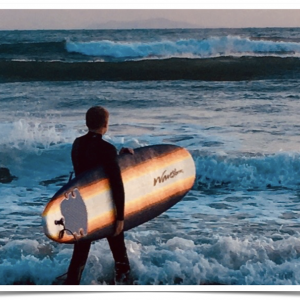Engaging English (F21 ENGL 20200-001 Purdue) Dashboard
Participants
Description
 This class will teach you how to surf (the Internet) and about the various ways that English studies have been transformed over the last few decades. Starting with some basic close-reading and analysis skills (aided by annotation at COVE Studio), we will then explore how those skills have been increasingly applied to new areas of inquiry (tv, film, culture, critical theory, and politics). Throughout, we will employ new digital tools that change the way we approach our subjects of inquiry, including Web annotation, timeline-building, gallery-building and GIS mapping. As we proceed, we will consider the nature of English studies: What is an English department and how does it relate to the rest of the university? What can you do with an English degree? Why is it necessary to fight for English in an increasingly STEM-oriented world?
This class will teach you how to surf (the Internet) and about the various ways that English studies have been transformed over the last few decades. Starting with some basic close-reading and analysis skills (aided by annotation at COVE Studio), we will then explore how those skills have been increasingly applied to new areas of inquiry (tv, film, culture, critical theory, and politics). Throughout, we will employ new digital tools that change the way we approach our subjects of inquiry, including Web annotation, timeline-building, gallery-building and GIS mapping. As we proceed, we will consider the nature of English studies: What is an English department and how does it relate to the rest of the university? What can you do with an English degree? Why is it necessary to fight for English in an increasingly STEM-oriented world?
See below, "Galleries, Timelines, and Maps," in order to add items to our collective map, timeline and gallery exhibit. Click on the links below to begin.
Galleries, Timelines, and Maps
There is no content in this group.
Individual Entries
San Francisco is an important place in relation to the Internment Camps as it's the place the gallery picture resides. It's also one of the more prominent places Japanese Americans were forced to relocate from. California has always been a very progressive state and to see them executing the Executive Order passed by Roosevelt goes to show the bipartisan support that such a discriminatory law had. The relocation camps were all lined up on the West Coast for 2 reasons: Most Japanese Americans who immigrated to the United States during that time did so by sea which brought them to the western front of the United states and second, the most conceivable way the Japanese would try to invade the United States would be an attack from the West.
Connecting to the timeline about "The Feminine Mystique", this fueled a resurgence of the feminist movement where middle-class women all across America began to advocate for women's political and social equality. In 1963 President John F. Kennedy signed the Equal Pay Act of 1963 in Washington DC where women could no longer be paid less compared to men for doing the same job. So, employers cannot award unequal wages or benefits to women and men that require “equal skill, effort, and responsibility, and which are performed under similar working conditions.” Esther Peterson, head of the Women’s Bureau of the Department of Labor, was a vocal supporter for the legislation. She was chaired Kennedy's Presidential Commission on the Status of Women. Also, Edith Green and Katharine St. George also helped lead the passes of the bill. Although there was opposition for this Bill from Retail Merchants Association and Chamber of Commerce which were powerful business groups, it was passed. This...
moreCambridge Union held the famous debate between James Baldwin and William F. Buckley.
William Buckley Jr. was the founder and editor of the National Review magazine in 1955. It is centered in New York City.
Harlem is the birthplace of both William Buckley Jr. and James Baldwin.
